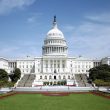America’s birds will appreciate your cooperation
If your wireless operations include a communications tower, recent rule changes made by the FCC to assist in the prevention of avian deaths in collisions with towers have created the requirement that you no longer can use the description, "Tower — Free Standing or Guyed Structure for Communications."
The changes also help the FCC classify the types of towers installed. Starting in June 2012, it has been mandatory that operators specify exactly which of four different tower structures they use, and that designation must be included on both new license applications and when filing modifications to existing licenses. Non-compliance could lead to further delay in processing an application, and possibly also subject the tower owner to FCC fines.
The FCC made the changes to conform to NEPA (National Environment Protection Act) Compliance for Proposed Tower Registrations; Effects of Communications Towers on Migratory Birds. This is the direct result of petitions filed with the FCC as early as 2002 by organizations including the American Bird Conservancy, Defenders of Wildlife and National Audubon Society, and is based on research involving television towers dating back to 1949. These organizations seek to minimize migratory bird deaths from collisions with towers, and in their filings, the FCC cited at least one study that reported 42,000 migratory birds killed by towers over a 25-year period. With the proliferation of communications towers, their argument has been that, logically, migratory bird deaths only have increased.
While research shows that towers cause about 1% of avian deaths, with other threats like buildings and cats of more concern to the birds and their supporters, all tower owners must do their part and comply with the new regulations. From now on — in both new applications and when modifications are submitted — rather than the generic tower description, one of the following must be selected:
- GTower, which is a guyed structure, using ropes or wires under tension to stabilize the structure;
- LTower, a free-standing framework tower that uses no guy wires;
- MTower, a single-pole structure constructed of wood or metal that can be mounted on another structure — a building, tower or vehicle — or can be free-standing, and may use guy wires for stability.
"It's unclear how the clear identification of the structures will reduce avian mortality," said Bill Sterner, EWA's executive director of spectrum operations, "but better identification should help the FCC identify which types of structures are the biggest liability."
In their Report and Order, the FCC's 58-page document not only spells out the new requirements for identifying precisely which type of structure is being deployed, it contains other specifications now required of operators as a result of conformance to the NEPA requirements and designed to help the migratory birds.
Towers taller than 450 feet will now require an EA (environmental assessment) for what is termed "avian effects" due to the research showing that "avian collisions occur 68-86% less frequently at towers between 380 and 480 feet AGL, compared with towers greater than 100 feet AGL." Plus, operators may be surprised to learn that "L-810 steady-burning red lights pose the greatest danger of migratory bird mortality."
EWA has posted numerous articles on the requirements and Mark Crosby has blogged on the subject, and we encourage operators to either familiarize themselves with the specific rules or contact EWA.















